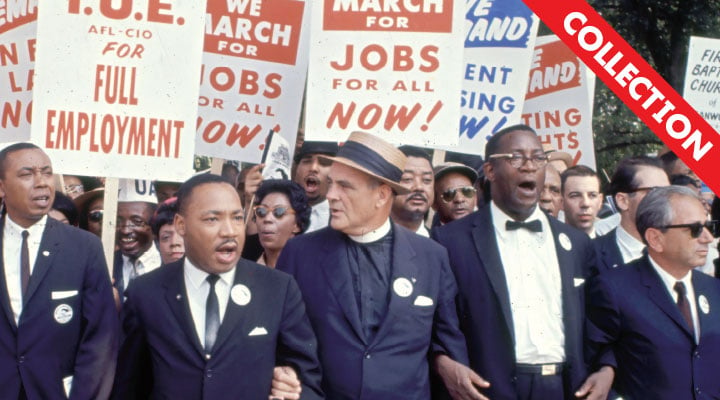On September 4, 1957, Elizabeth Eckford woke up feeling nervous about her first day of school. It was no ordinary first day. Elizabeth and eight other teens were going to be the first African-American students to attend Central High School in Little Rock, Arkansas. These students would later become known as the Little Rock Nine.
They never made it into the building that day. Elizabeth, then 15 years old, was met at the school by an angry crowd. People in the crowd didn’t think black students should go to the same schools as white kids. The mob screamed at Elizabeth and spit at her.
“I was afraid for my life,” recalls Elizabeth.
Elizabeth was shaking with fear, but she kept walking. Troops armed with rifles stood near the school’s entrance. She thought they were there to protect her. But instead, the troops stopped her and the other black students from entering the school.
A photo of Elizabeth walking through the crowd ran in newspapers across the country. Many people were angry about the way the Little Rock Nine had been treated. Their struggle to go to school became a key event of the civil rights movement. That was a period during the 1950s and 1960s when many African-Americans worked hard to end unjust laws based on the color of people’s skin.
On September 4, 1957, Elizabeth Eckford woke up feeling nervous. It was her first day of school. But it was no ordinary first day. Elizabeth and eight other teens were going to be the first African-American students to attend Central High School in Little Rock, Arkansas. These students would later become known as the Little Rock Nine.
They never made it into the building that day. Elizabeth, then 15 years old, was met at the school by an angry crowd. People in the crowd didn’t think black students should go to the same schools as white kids. The mob screamed at Elizabeth. They also spit at her.
“I was afraid for my life,” recalls Elizabeth.
Elizabeth was shaking with fear. But she kept walking. Troops armed with rifles stood near the school’s entrance. She thought they were there to protect her. But instead, the troops stopped her. Elizabeth and the other black students were blocked from entering the school.
A photo of Elizabeth walking through the crowd ran in newspapers across the country. Many people were angry about the way the Little Rock Nine had been treated. Their struggle to go to school became a key event of the civil rights movement. That was a period during the 1950s and 1960s. During that time, many African-Americans worked hard to end unjust laws based on the color of people’s skin.
